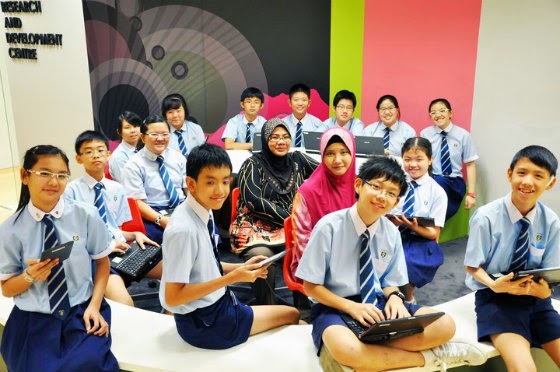Roy Ngerng’s analysis shows that Singapore’s top ranking in the Human Capital Index may arguably, not be what it seems to indicate – once you delve into the details?
I refer to Roy Ngerng’s article “Singapore’s Education Outcomes Are Very Unequal at Higher Levels of Difficulty” (thehearttruths, Oct 13).
It states that “It is true that Singapore “outperforms the rest of the world” in education – in science, reading and mathematics, and ranks top in human capital.
But it is also true that the education outcomes are also very unequal.
In Chart 1, you can see that at the easiest level of difficult (Level 1), both the richest and poorest students in Singapore perform well in reading, mathematics and science.
However, as the difficulty level increases (to Level 4), you can see that the achievement gap widens.
At Level 4 thus, for most countries, the gap between the richest and poorest therefore narrowed because even among the richest students, they would have difficulty performing well at the highest level of difficulty. However, Singapore bucks the trend where the richest students are still performing fairly well.
But this is where the inequality becomes glaringly obvious. In fact, the poorest students perform behind the richest students in the top 20 countries. What this shows is that yes, Singapore’s overall education outcomes is good, but it is also true that the education outcomes are very unequal, where the gap between the richest and poorest is also very high.
Also, what is clearly a concern in these comparisons is that even though Singapore provides a good basic foundation-level education, education outcomes at higher levels of difficulty is vastly unequal.
- the government might say that they are “bringing everybody to a good starting point as early as possible in life“, but if other countries have shown that by the upper secondary level, students will catch up anyway, is there a need to put that much stress on students at such an early age? Is there a need to stream them at age 10 (Primary 4), age 12 (Primary 6) and age 14 (Secondary 2) when an examination at age 16 should suffice?
- Finally, if students are only brought to a good starting point but they are not helped to perform well all the way (where the gap between the richest and poorest is the highest in Singapore for the highest level of difficulty), then does it help to narrow the gap between the “rich and poor”, and between the “advantaged and disadvantaged”, or is the education system therefore actually perpetuating inequality?”
- In this connection, I would like to support Roy Ngerng’s analysis as follows:
- … the proportion of tertiary scholarships that are awarded to richer students relative to poorer students in Singapore, is very high, relative to their distribution in the population
- … the proportion of post-graduate level scholarships and admissions given to non-Singaporeans into the public universities is very high – estimated at about 70%
- … the typical Singaporean university student graduates with a debt of over $30,000 as most may have take the ‘tuition fee’ loans (fees have been increasing almost every year)
- … students in ‘gifted schools or programmes’ and higher ranked schools are disproportionately represented by students from richer families
- … lower-income parent may not be able to make full use of the matching contributions under Child Development Account
- … procreation taxation policies are discriminatory against lower-income families
- Leong Sze Hian
